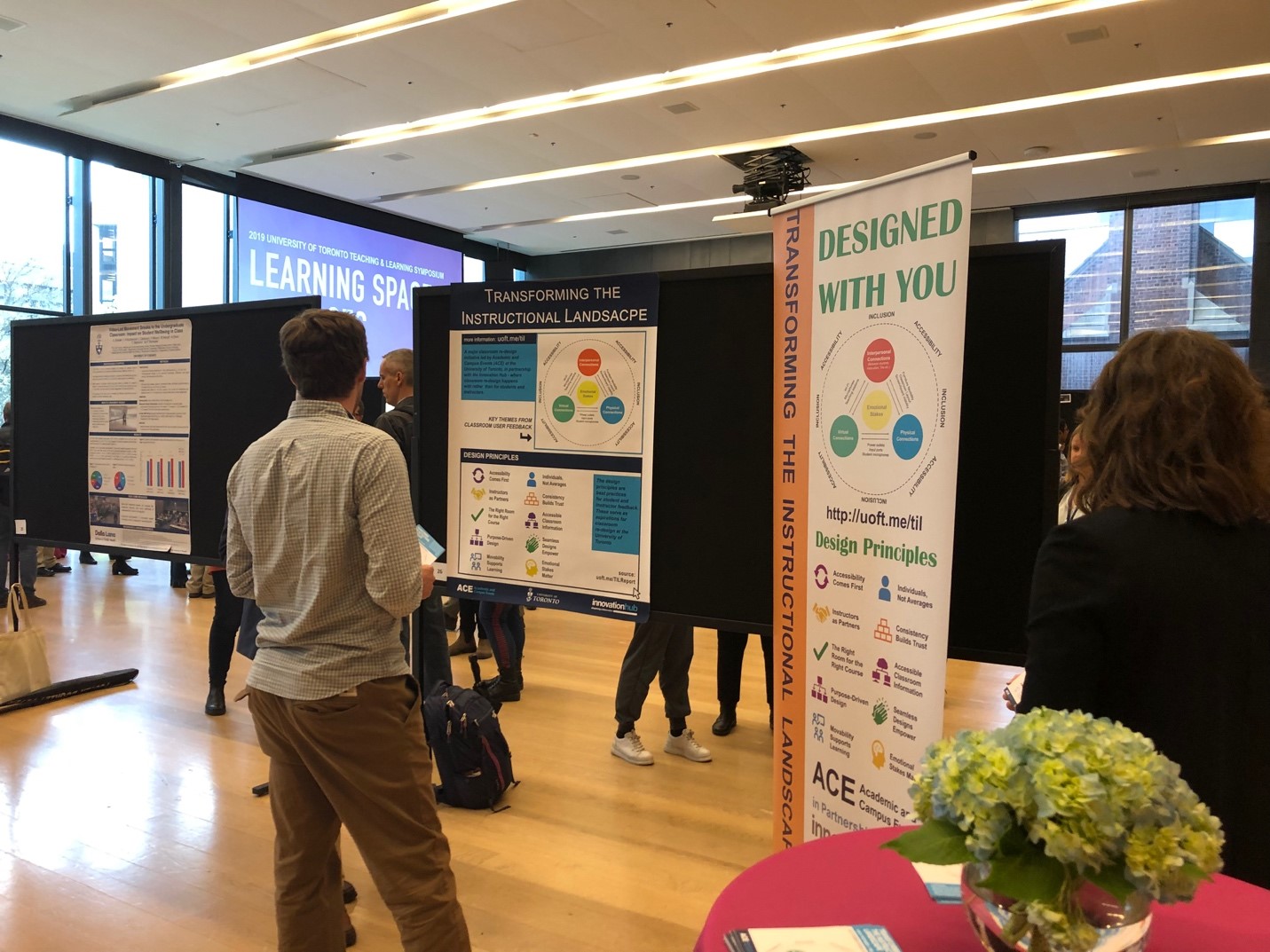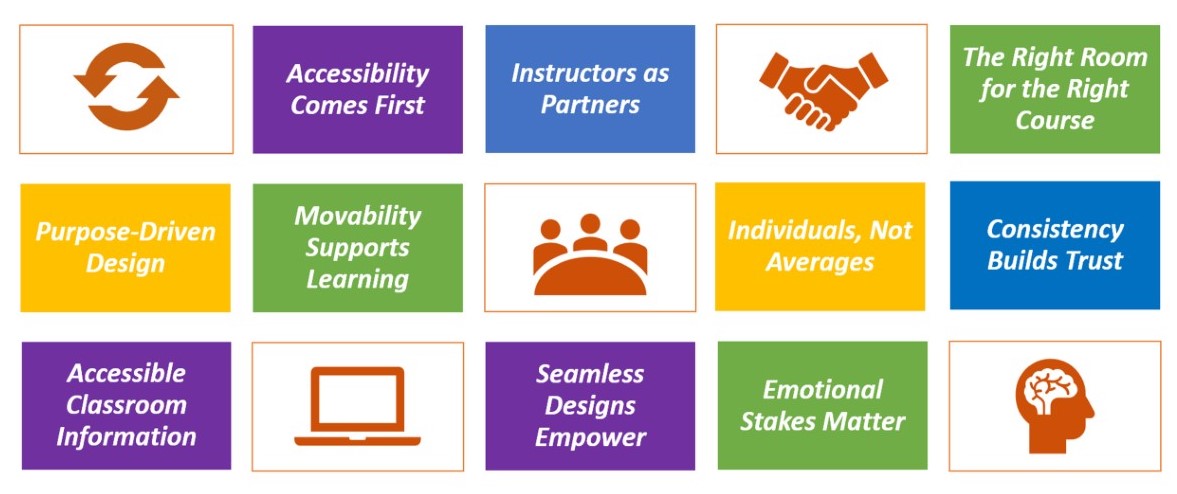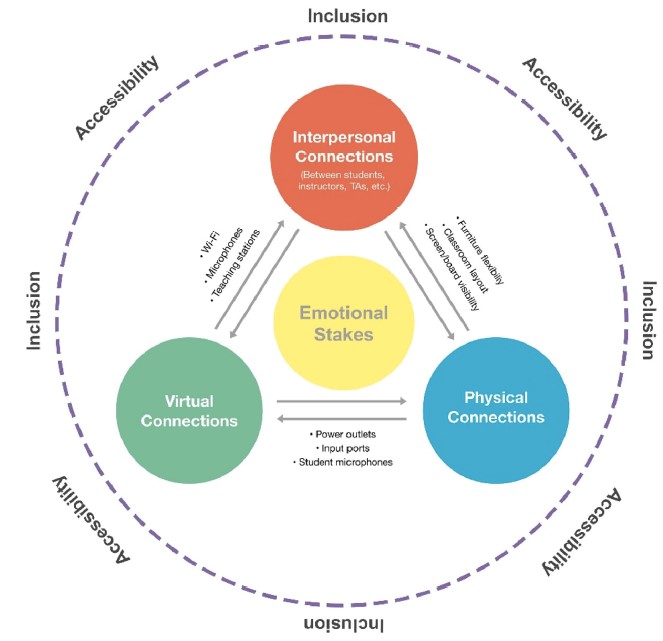
Design Thinking Team Lead
In the Transforming the Instructional Landscape (TIL) project, we try to understand what makes a classroom work as a productive learning environment. As this work has progressed, it has expanded to include many perspectives: we started by focusing on the student experience, but came to realize that student experiences are entangled with the experiences of other people who spend time in and around classrooms, and with the spaces and things that promote learning.
To capture this bigger picture of how classrooms work, the Innovation Hub broadened its inquiry last year, conducting interviews with course instructors, shadowing audio-visual technicians, and hosting six public feedback events. Out of this work, “connectivity” emerged as a lens through which to understand the classroom experience. We modelled this idea in our latest report with a diagram that shows the dynamic relationship between interpersonal, virtual, and physical connections, all of which are influenced by—and contribute to—the accessibility and emotional experience of a classroom. The diagram depicts the interdependence of these different types of connection: without comfortable and flexible furniture, for example, it becomes harder to build interpersonal connections between students, instructors, and TAs.
Others have also taken up this theme of connectivity in the classroom. At the Teaching and Learning Symposium in May, core members of the TIL project presented a poster to faculty, librarians, students, and staff who brought out the theme of connectivity in their own talks. At the session on podcast pedagogy, for example, they discussed podcasting as a practice of imaginative listening and narrative connection, and in the lightning talks, Glenn Brauen discussed pedagogical approaches that connect spaces with our experiences of them.

To help create classrooms that promote connectivity, the Innovation Hub produced design principles for learning spaces. Design principles provide guidelines to reflect upon when designing objects, spaces, and processes, so that the final design better reflects the needs of users, as determined through interviews and user feedback.

As we plan our fall work, we hope to expand upon the themes of connectivity and community, and work towards the vision expressed in our design principles. We are conducting a group brainstorm on ways we can bring students and teachers to discuss with each other what does and doesn’t work in the classroom. Students learn from instructors about diverse topics here at U of T. But how might students and teachers learn from each other about the classroom experience itself?
We also plan to integrate our work with the work of those who are improving pedagogy. As seen from the design principle of “Instructors as Partners,” we discovered that the physical design of classrooms and the organizational design of managing those rooms are intertwined with pedagogy. How a classroom should look and function depends on how instructors teach. Thus, we’re excited to collaborate with the Centre for Teaching Support and Innovation, and with the TIL Advisory Committee of senior academic leaders and instructors, which was convened by Vice-Provost Susan McCahan.
These are the visions and collaborations that are driving our work this summer. Stay tuned for updates.
This post is part of the Project Primer series, in which we introduce the projects the Innovation Hub is conducting this summer. To learn about our other work, check out our last two posts, and come back next week for more!

0 comments on “Project Primer: Transforming the Instructional Landscape”